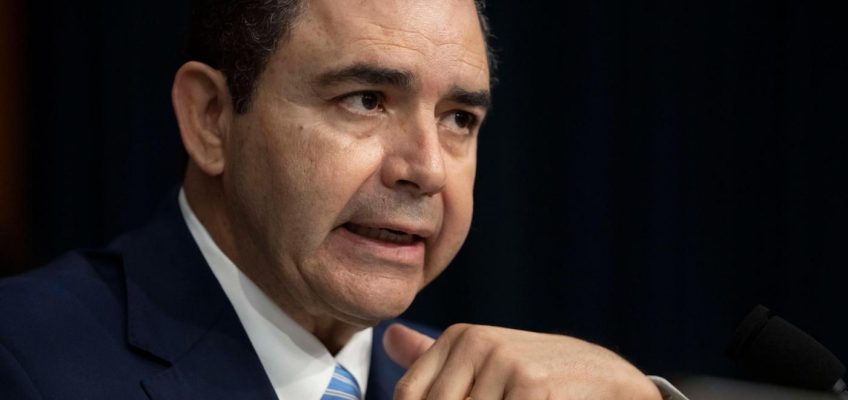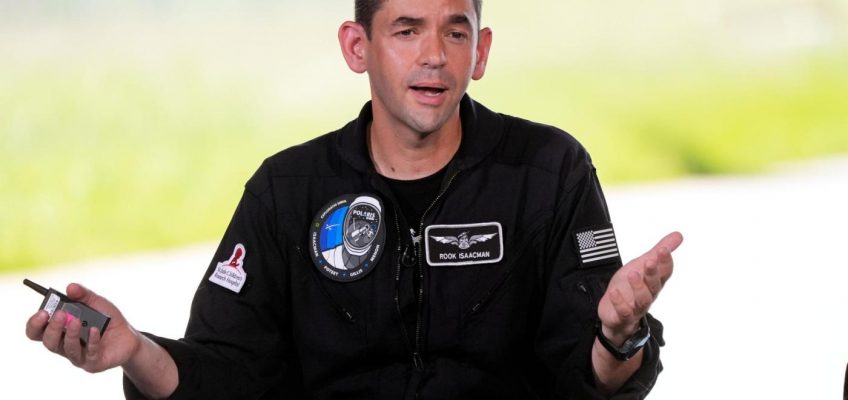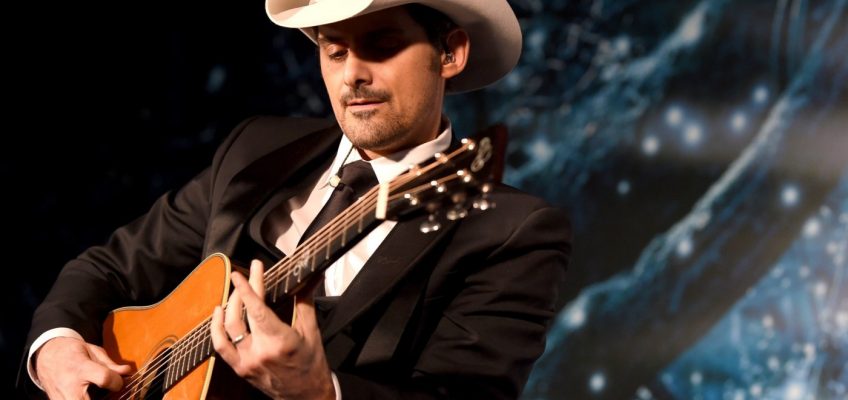We love those classic Christmas recordings.
And we cherish the chance to hear Nat King Cole, Johnny Mathis, Barbra Streisand, the Beach Boys, Darlene Love and other greats sing these standards each and every Christmas season.
Yet, we also like to spice things up and add some new voices to our holiday playlist.
Thankfully, we never have any shortage of contenders trying to make the cut. That’s because there are dozens upon dozens of new Christmas albums released each season.
We’ve combed through the offerings and have come up with what we consider to be the best of the bunch.
Here are our picks for the top 10 new Christmas albums for 2025:
1. “On This Winter’s Night: Volume 2,” Lady A
The country act’s first seasonal offering, 2012’s “On This Winter’s Night,” was a joyous affair that included sparkling versions of such Christmas classics as “The First Noel” and “Let It Snow! Let It Snow! Let It Snow!”
Thirteen years later, the platinum-plus-selling Nashville trio — consisting of lead vocalists Hillary Scott and Charles Kelley as well as the multi-talented Dave Haywood — returns with an equally good follow-up record.
This second installment, in what hopefully will grow into a lengthy series, includes solid takes on “O Holy Night,” “Winter Wonderland” and other favorites. It also features guest appearances from Ricky Skaggs on “Why We Sing Noel” and Chris Tomlin on an absolutely gorgeous version of “Silent Night.”
Listen to: “Silent Night” (featuring Chris Tomlin)
2. “Greatest Gift of All,” Stryper
The holidays are about to get heavy – but in the right way – as powerhouse metal act Stryper finally releases its first-ever Christmas album.
The SoCal outfit, best known for the platinum-selling ‘80s offering “To Hell with the Devil,” thoroughly rocks us around the Christmas tree as it thunders through a mix of holiday classics and originals.
As far as the latter goes, we are really enjoying turning up the volume on “Still the Light” — which features some blistering guitar work from Michael Sweet and Oz Fox — and the Black Sabbath-esque “On This Holy Night.”
Truly great stuff from Christian metal’s most legendary band.
Listen to: “Still the Light”
3. “Greatest Hits Christmas,” LeAnn Rimes
The country crooner — blessed with one of the finest singing voices in the history of the genre — has a long history with holiday recordings. It began in the mid-‘90s when she recorded “Put a Little Holiday in Your Heart” as a promotional/bonus single for her blockbuster major-label debut, “Blue,” and has continued through the years.
This generous collection, which is big enough to warrant a double-LP release for vinyl fans, gathers up so many of her classic Christmas recordings — “Rockin’ Around the Christmas Tree” to “I Want a Hippopotamus for Christmas” — as well as three new cuts.
Collectively, these songs serve to underscore that Rimes stands among the greatest Christmas music interpreters of the last 30 years.
Listen to: “Little Drummer Boy”
4. “Let Me Carry You This Christmas,” Darius de Haas
The versatile vocalist has quite a track record in the theater world, having appeared in Broadway productions of “Rent,” “Kiss of the Spider Woman,” “Carousel,” “Marie Christine” and other plays. He’s also fashioned an impressive career as a concert/recording artist, performing with both the Boston and Cincinnati pops orchestras and releasing a number of albums.
Now, he’s making his mark in the seasonal music realm with this 11-track outing. He’s blessed with a beautiful voice — which many know from him doing the singing parts for the character of Shy Baldwin on Amazon’s “The Marvelous Mrs. Maisel” — and he puts it to great use on “The First Noel,” “Silent Night” and other holiday tunes.
Listen to: “Who Would Imagine a King”
5. “Come Home for Christmas,” Matthew West
The contemporary Christian singer-songwriter, who gave voice to such chart-topping hits as “More,” “You Are Everything,” “Hello, My Name Is,” “Grace Wins,” “Broken Things” and “The God Who Stays,” is inviting music lovers to “Come Home for Christmas.”
This eight-song offering follows is yet another Christmastime delight for West, who previously recorded “The Heart of Christmas” in 2011 and “We Need Christmas” in 2021. The set is a mix of original tunes and holiday standards. And, as an added bonus, it even includes a “kids version” of West’s excellent Thanksgiving ode “Gobble Gobble.”
Listen to: “Because of Bethlehem”
6. “Nollaig — A Christmas Journey,” Celtic Woman
These PBS favorites originally came together for a one-off performance in Dublin, Ireland, in 2004 and are still going strong 21 years later. And now they are embarking on “A Christmas Journey.”
It is not — to put it mildly — their first such journey. Celtic Woman, which some have described as “’Riverdance’ for the voice,” has released approximately 215,334 seasonal albums over the years.
Or it could be 215,335 — since the group might have released another since I started writing this.
The reason the collective keeps releasing holiday platters — and the reason we keep buy them — is that it does a really good job with the Christmas songbook.
And that’s certainly the case, once again, with this fine collection of wintery tunes.
Listen to: “God Rest Ye Merry, Gentlemen”
7. “Christmas Time Is Here,” Herb Alpert
The legendary trumpeter — who turned 90 earlier this year — has delivered such a gorgeous set of Latin-flavored holiday songs with “Christmas Time Is Here.”
The collection of mostly instrumentals kicks off with a true jaw-dropper — with Alpert pouring such emotion and feeling into a softly held version of “Feliz Navidad” — and then continues to shine through such Christmas classics as “White Christmas,” “Winter Wonderland” and “Sleigh Ride.”
Of course, this is not the first holiday rodeo for Alpert, who achieved massive success with 1968’s “Christmas Album” — recorded with his Tijuana Brass band — and then followed up with the well-received “Christmas Wish” some 50 years later.
Listen to: “Feliz Navidad”
8. “Christmas,” Natalie Grant
A lot has happened since this Seattle native released her first seasonal offering — “Believe” — in 2005. For starters, she won a mind-blowing four consecutive Dove Awards for female vocalist of the year from 2006-2009. (And then she’d add a fifth such trophy to her collection in 2012.)
Twenty years after “Believe,” Grant returns with “Christmas,” another gorgeous set of holiday favorites (“Have Yourself a Merry Little Christmas,” “Winter Wonderland,” etc.) and other tunes. We especially love her work with MercyMe’s Bart Millard on “Silent Night.”
Listen to: “Silent Night”
9. “Snow Globe Town,” Brad Paisley
“Brad Paisley Christmas” was a fine holiday affair, filled with cool covers of seasonal staples (“Silent Night,” “Winter Wonderland,” etc.) as well as a few more unorthodox selections (notably, the PC-diss-track “Kung Pao Buckaroo Holiday”).
The country music star’s long-awaited follow-up — coming 19 years after that first 2006 Christmas outing — is another intriguing platter that mixes tradition and novelty.
Paisley, a decent vocalist and excellent guitarist, sounds like he’s having a blast on “That Crazy Elf (On the Shelf),” “A Marshmallow World” and other fun tunes. Yet, listeners are likely to enjoy his work on the slower numbers even more.
Listen to: “The First Noel”
10. “It’s Christmas,” Eric Benet
The R&B crooner, responsible for such top 10 hits as “Spiritual Thang,” “Femininity,” “Let’s Stay Together” and “Spend My Life With You,” returns with his 10th full-length studio outing — which also happens to be his second offering of 2025.
“It’s Christmas,” which follows the release of “The Co-Star” in June,” is warm and smooth from start to finish, as Benet brings his equally sophisticated and soulful approach to “Please Come Home for Christmas” and other favorites.
When Benet sings a song like “Christmas Time Is Here,” it feels like you’re both in the same room, tipping back cups of eggnog and enjoying a softly glowing fire.
Listen to: “Oh Holy Night”




